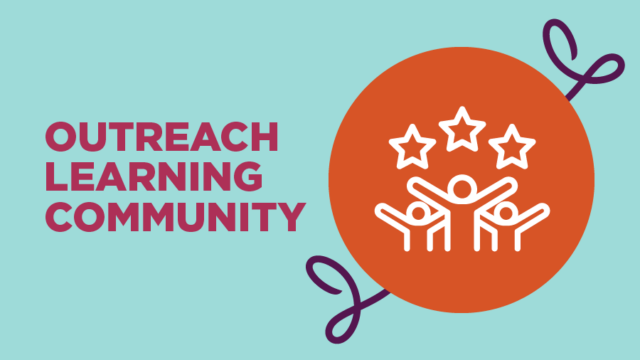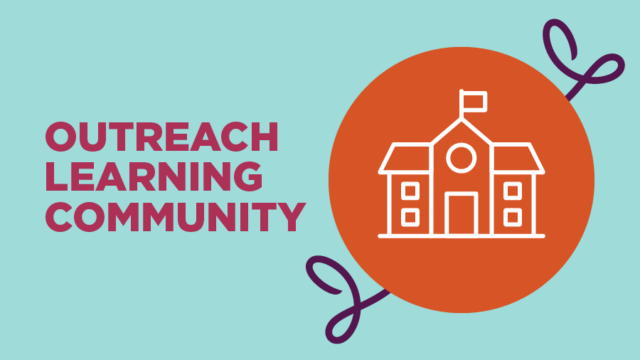Tip Sheet
Tips to Include Kinship/Grandfamilies in Programmatic Decision-Making
Download This Resource

Increasingly, government and nonprofit leaders are recognizing the value of engaging individuals with lived experience when creating and enhancing programs and services. Programs and services are more effective, trusted, and used when they intentionally draw on the perspectives of those they seek to serve.
This resource offers tips for engaging with caregivers, youth, and parents with lived experience in kinship/grandfamilies so that they can meaningfully contribute to programs and services intended for them. The term “kinship/grandfamilies” refers to all families in which grandparents, other relatives, or close family friends are raising children whose parents are unable to do so. The terms “grandfamilies” and “kinship families” can be used interchangeably to refer to these families.
What is the value of engaging kinship/grandfamilies in the creation and enhancement of programs and services?
- Greater Trust and Use: Families are more likely to trust and use services and programs when they know that the offerings have been guided by their peers who may use the services themselves.
- More Effective: Services and programs that are informed by individuals who use them are more effective than those that have not been peer informed.
- Improved Relationships and Better Outcomes: When kinship/grandfamilies experience positive, meaningful engagement with government agencies and nonprofit organizations, it can repair or strengthen family relationships with those agencies and organizations, leading to better outcomes.
How do I prepare to engage kinship/grandfamilies?
- Be Clear about Roles, Responsibilities, and Goals while Remaining Open to Feedback and Change: Develop a written plan that lays out the roles, responsibilities, and goals of the engagement. This plan is a way to establish an understanding of the work and build trust with each other. Do not consider this plan set in stone. It is important to periodically revisit the plan together as the work progresses and as you learn more about each other.
- Plan to Bring Lived Experts to the Decision-Making Table: Lived experts are most effectively engaged when they are interacting at the decision-making table, rather than through a separate group or process. Get leadership and staff buy-in and create plans and processes to integrate lived experts into the work.
- Recognize Power Dynamics: When agencies and organizations seek to engage lived experts, it is important to acknowledge the power dynamic between the agency/organization and those receiving services from it. This is especially true for child welfare and court systems that have the power to remove children from families. Design the engagement opportunity with this knowledge in mind.
- Consider Institutional and Structural Prejudices and Your Own Biases: Assumptions and choices within existing structures are often connected to prejudicial roots and lead to disproportionate outcomes across different groups. Leaders must recognize that these problems exist and examine their own implicit biases in order to promote full engagement and accurate input from kinship/ grandfamilies.
- Be Thoughtful about When Opportunities are Offered: Kinship/grandfamilies are not always available to meet between 9:00 a.m. and 5:00 p.m., as they are often juggling many responsibilities associated with caregiving and work. Offer a range of times, locations, and ways to work together, including in-person meetings and video and/or conference calls.
- Plan to Engage Throughout the Process: Plan to ask lived experts to provide input as a program or service is first being envisioned, during its development, and when it is being implemented and evaluated. Don’t bring in the lived experts late in the process when their recommendations can no longer be considered, simply to seek a “rubber stamp.”
- Enhance the Capacity of Others to Hear and Act on Input from Lived Experience: Educate other program leaders, stakeholders, and staff on the value of listening and really hearing people with lived experience.
How do I identify and recruit kinship/grandfamilies to participate?
- Identify the Right Fit: In selecting the right people for an opportunity, be clear about the types of experiences, relationships, or other characteristics you are seeking. Be thoughtful about how this person will interact with and experience other people in the room. For example, will staff from a child welfare agency also be participating? If so, did the lived expert have recent involvement with child welfare? If the experience is still raw, could it make it difficult to contribute or interact in a productive way?
- Engage Diverse Perspectives: All lived experiences in kinship/grandfamilies are not the same. When selecting individuals for an opportunity, consider engaging people who represent diverse perspectives in terms of age, race, gender identity, sexual orientation, geography, culture, disability, relationship between caregiver and child, and the reason the kinship/grandfamily was formed.
- Find the Voices: If you work in direct service, you should be able to find the right fits among your service population. Make sure to be thoughtful about when and how you ask for their help, including by waiting until their situation is stable and being clear that their participation is voluntary. If you do not work in direct service, you may not have professional relationships with people with lived experience. With your engagement criteria, reach out to the direct service providers to kinship/grandfamilies within your community. Consider reaching out to Generations United to engage a caregiver GRAND Voice, connecting with FosterClub for a youth voice, and contacting Children’s Trust Fund Alliance for the voices of parents.
- Reach Out to Individuals and Provide Background Information: Share the purpose, expectations, participant roles, and dates and length of commitment, as well as the plan you created as part of the initial steps above. Give time for kinship/grandfamilies to share experiences and examples of what they may bring to the table. Respond with affirmation and guidance. Provide an opportunity for individuals to ask questions and receive answers both while meeting as a group and privately.
- Engage Two or More People: When possible, invite at least two people to bring their lived expertise perspective to an opportunity (i.e., two kin/grandfamily caregivers, two parents, and/or two youth). This helps prevent one individual from feeling the weight of representing all lived experience perspectives. Having a peer involved in the same project can also build participants’ confidence in speaking up and can provide another trusted person to debrief with frankly about the experience.
How do I support kinship/grandfamilies before, during, and after these engagements?
- Prepare Individuals: Individuals with lived experience in kinship/grandfamilies should receive information and, when possible, training to prepare for an engagement.
- “Strategic Sharing” training can help individuals make strategic choices about what they tell so that their voices can be heard and their well-being is protected.
- Communicate in advance about information sharing and privacy so that participants can make thoughtful choices about what to share and how their sharing will impact themselves, their family, and others in their story.
- Prepare individuals to be sensitive to their own emotions and trauma, along with those of others in the engagement. For example, if a grandparent caregiver will be participating as a lived experience expert in a working group alongside a parent whose children are being raised by their grandmother, prepare both individuals to consider what emotions it may bring up for them as they interact with the other individual. Talk through strategies to relate to other perspectives. Help the individuals plan for how to step back or take a break if emotions or trauma begin to impact their own well-being or ability to interact productively.
- Set Clear Parameters: When inviting individuals to give input, be clear with them about what they can and cannot change. If parameters are unclear and they spend valuable time on ideas or recommendations that are immediately disregarded because of budget or other limitations, it will erode trust and interest in future engagement.
- Establish Ground Rules: Lay out ground rules for conversation and interaction before any engagement. The group’s rules should recognize that individuals may come from a range of backgrounds and that their backgrounds may include exposure to trauma.
- Avoid Jargon: Every industry has its own set of acronyms and “insider speak.” This can inhibit individuals with lived experience from following the conversation or feeling comfortable speaking up. Avoid using acronyms and, when using them is unavoidable, always explain what they mean.
- Debrief with Participants Following Engagements: Hold regular debrief meetings to check in on how engagements are going. Talk through challenges and support them while thinking through solutions. If a participant experienced a triggering event, check in with them individually to offer support, but respect their wishes if they want space.
- Tell Lived Experts How their Input is Used: Implement ways to routinely update the lived experts on how their input is used and what impact it has. If their input is not used, program leaders should reach out to the experts and explain why as soon as possible.
- Connect to Resources: If the engagement raises questions or needs related to the kinship/grandfamily’s own individual or family situation, connect them to help, such as a local kinship navigator program. You can share the appropriate GrandFacts fact sheet with caregivers in each state, DC, Puerto Rico, and the U.S. Virgin Islands. The Grandfamilies & Kinship Support Network: A National Technical Assistance Center also has prepared a list of kinship navigator programs.
- Provide Compensation and Cover Expenses: It is important to compensate members of kinship/grandfamilies for their time and expertise and for costs associated with the engagement, just as you would for any other expert consultant.
- Provide a stipend or other compensation that relates to the amount of time the work requires. Compensation may be cash, a gift card, or other financial support. If there are multiple individuals with lived experience participating, coordinate to compensate them all equitably.
- Communicate up front about the amount of compensation, any tax implications, and the potential impact of additional income on current government benefits. To prevent issues with public benefits, it may be beneficial to use gift cards instead of cash.
- Be thoughtful about equipment, training, or travel expenses that you may need to provide or cover. For example, do the lived experts need a computer or printer? Do they understand how to use Zoom or other specialized applications or software? Do they have internet access? Do they need transportation (air, train, ground transport), lodging, and/or a per diem?
- When possible, pay for expenses up front instead of reimbursing after receiving expense reports. Up-front costs may prevent people with low incomes from being able to participate.
- When reserving hotels, work with the hotel regarding the potential credit card hold for incidental expenses. Covering room and tax may not be adequate. Almost all hotels require a credit card to check in, and many place a hold on it for incidental charges. The hotel may put a hold of $100 or more on credit cards for as long as 10 days, which can cause hardships for people with low incomes who lack business credit cards. In advance of the stay, ask the hotel about their policy regarding credit cards and holds. Ensure that the lived experts understand the policy and how you are handling it. You may need to provide your agency’s credit card number for holds and explain to experts that they should not charge incidentals to the room.
Examples of Effective and Ineffective Kinship/Grandfamily Engagements
Opportunity: A child welfare agency is creating a family council to give input on services
Effective Engagement: The agency invites applications to create a family advisory council. The application includes information about the time commitment, a stipend for participation, and the goals of the council. Parameters related to the budget and policy restrictions are clearly described. A diverse council of kin/grandfamily caregivers, young people, and parents is selected and gives input into when the meetings are held, their experiences with services, and what types of supports would be helpful to them. They participate regularly in meetings with leaders where key decisions about services are made. They are routinely informed about how their input is affecting programs and services.
Ineffective Engagement: The agency holds several meetings with staff to develop and plan a new program. They get the budget approved and draw up an implementation plan. They create a family council with kinship/ grandfamilies to review the plan and give feedback. The lived experts recommend that the program be changed to offer different types of services and expand eligibility requirements to make the services available to a wider range of families. Agency staff tell the lived experts their recommendations are outside the scope of the budget and policy and none of the recommendations are implemented, but their names are included as advisors when the new program is revealed.
Opportunity: An Area Agency on Aging (AAA) has been receiving requests for financial assistance from kinship/ grandfamilies and needs to determine what type of assistance to provide.
Effective Engagement: The AAA conducts outreach and identifies five kin/grandfamily caregivers from a variety of backgrounds. The AAA facilitates a focus group to learn what types of services would be helpful. The caregivers also give input into the development of a survey distributed to other caregivers in the region. The AAA develops services based on the feedback from the focus group and the survey. Caregivers provide ongoing help with outreach, program design, and evaluation of services. The assistance provided helps the families meet their needs and connect to valuable resources.
Ineffective Engagement: Without consulting lived experts, staff members at the AAA decide to begin offering financial literacy classes/training to kinship/ grandfamilies every Tuesday at 3:00 p.m. No families attend.
In a follow-up assessment, they learn that caregivers could not attend because the class was offered when the caregivers need to pick up the children from school. They also learn through research that kin/grandfamily caregivers often have high levels of financial literacy but inadequate resources to cover basic needs.
Further Resources
- Children’s Bureau Information Memorandum ACYF-CB-IM-19-03: Engaging, empowering, and utilizing family and youth voice in all aspects of child welfare to drive case planning and system improvement.
- Family Voices United: Constituent Voice Assessment
- Children’s Trust Fund Alliance: Building and Sustaining Effective Parent Partnership
- Strategic Sharing:
The Network gratefully acknowledges and thanks GRAND Voice grandparent caregiver, Network subject matter expert, and Network management committee member Sarah Smalls and GRAND Voice grandparent caregiver Norma Hatfield for their input, guidance, and review of this resource.


